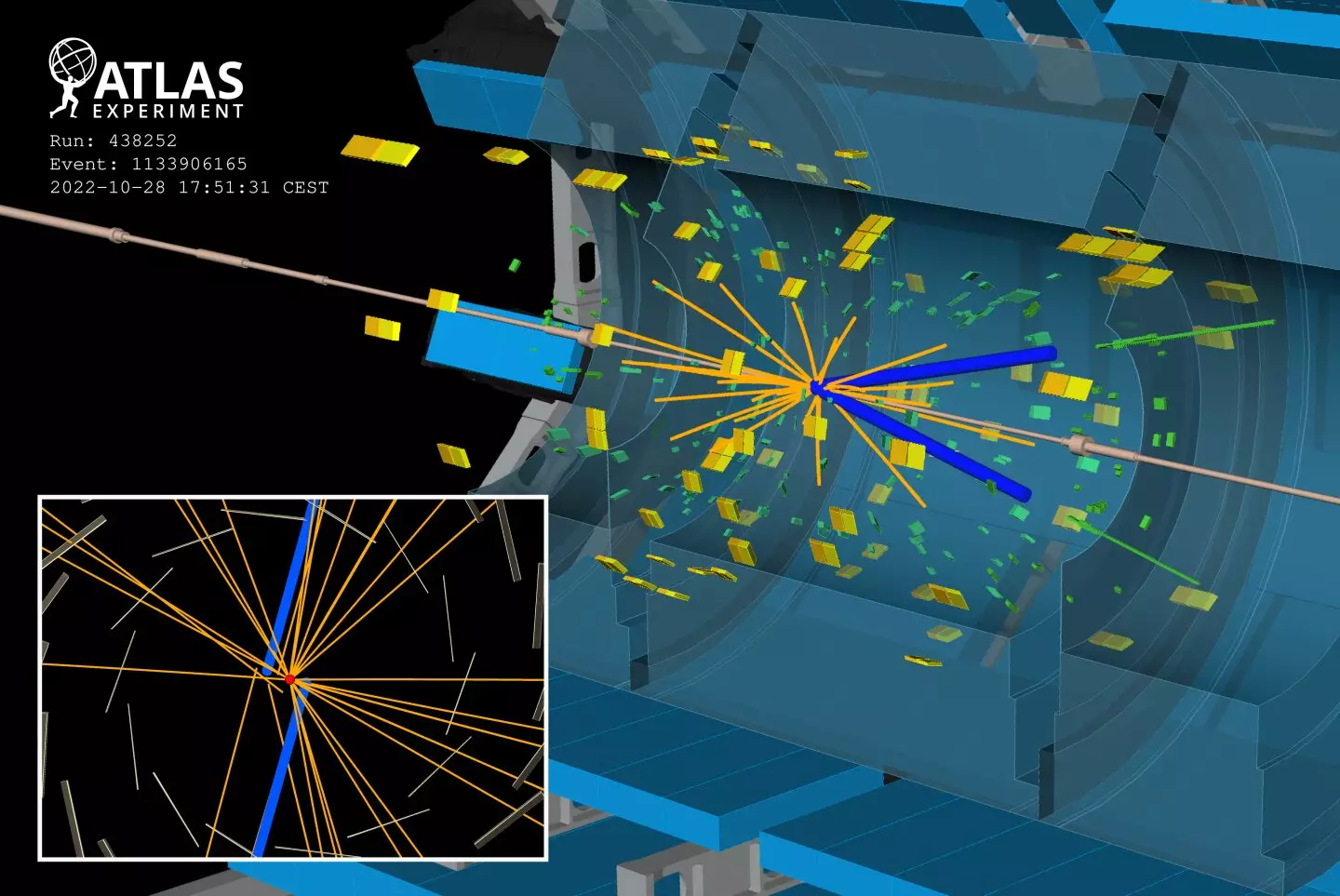The world of particle physics stands at a crucial crossroads, grappling with the limitations of the Standard Model, which faithfully describes the fundamental particles and forces known to science. However, an increasing cohort of physicists is vociferously arguing that the universe’s secrets extend far beyond what the Standard Model can delineate. This sentiment was front and center at the recent ICHEP conference in Prague, which transformed into an intellectual battleground for ideas as researchers from the ATLAS collaboration unveiled their initial findings from high-energy collision experiments. Their focus on elusive entities like magnetic monopoles and long-lived particles exemplifies the audacious push to transcend current scientific paradigms.
Magnetic Monopoles: The Holy Grail of Particle Physics
Among the topics capturing imaginations at the conference were magnetic monopoles. These theoretical particles are tantalizing in their promise; possessing only a singular magnetic charge, they would illuminate a profound symmetry between electric and magnetic forces. Their discovery could serve as a cornerstone for “grand unified theories” that attempt to merge the strong, weak, and electromagnetic forces under one umbrella, a feat currently unattained by the Standard Model. Researchers at the Large Hadron Collider (LHC) are actively pursuing the production of these particles in heavy-ion collisions, a task laden with complexity and challenge.
The ATLAS collaboration’s recent experiment undertaken during LHC Run 3 offers a glimpse into this captivating research. By analyzing lead-lead collision data at an unprecedentedly high collision energy of 5.36 TeV, the ATLAS team investigated ultraperipheral collisions where lead ions interacted through electromagnetic rather than strong forces. Such scenarios have the potential to yield the largest magnetic fields observed in the universe. If magnetic monopoles exist, they would manifest distinctly as concentrated clouds of ionization, leaving behind a trail of energy that is significant enough to captivate the attention of detection equipment.
Analyzing the Absence of Evidence
Despite the high expectations, the ATLAS collaboration reported no evidence of magnetic monopoles in Run 3 data, an outcome that underscores the challenging nature of discovery in the realm of high-energy particle physics. The results set stringent limits on the production rates of monopoles with masses below 120 GeV, a critical benchmark that propels the community closer to understanding the existence and characteristics of these hypothetical particles. However, the lack of findings doesn’t denote failure; rather, it paves the way for future inquiries into previously unexplored parameter spaces.
The ramifications of these findings extend beyond mere statistics. They introduce a robust methodology for investigating highly ionizing particles, an area where future research could yield groundbreaking insights into the nature of matter itself. By refining detection techniques, physicists can explore new realms of possibility that lie beyond the immediate grasp of established theories.
Long-Lived Particles: The Hidden Keys to New Physics
Intriguingly, the universe may hold other keys beyond magnetic monopoles—specifically, long-lived particles, which might provide clues about beyond-the-Standard-Model physics, such as supersymmetry. This hypothesis suggests that particles have supersymmetric counterparts, and discovering them could reshape our understanding of the universe’s fabric. During the recent analyses, ATLAS turned its gaze toward newly proposed decay signatures of long-lived particles that lead to displaced tracks away from the primary interaction point.
Physicists, as innovators, have enhanced data capture techniques by evolving collision-event selection processes to better isolate the unique signatures of these elusive particles. The ATLAS collaboration’s search for long-lived particles represents an exciting leap in methodology and conceptual thinking—seeking what remains unfound in the shadows of our detection capabilities.
Revolutionizing Techniques for Future Discoveries
With the LHC’s upgrades, particularly the High-Luminosity LHC on the horizon, ATLAS physicists are gearing up for an exciting new chapter in high-energy physics research. The drive for discovery is intrinsically linked to the evolution of detection techniques and analyses, which are becoming increasingly sophisticated. The methods for spotting rare decay products are set to transform, introducing an era where the New Physics might finally come to light, challenging our preconceived boundaries of reality.
As researchers continue pushing the envelope, it is vital to maintain a balance between skepticism and creativity—a fusion that spurs innovative ideas that may lead to those long-sought-after breakthroughs. The absence of definitive results in the search for magnetic monopoles or long-lived particles at this juncture does not represent a dead end; instead, it fuels an insatiable curiosity that propels the quest for understanding the cosmos’ most enigmatic secrets. The journey toward uncovering the true nature of the universe is fraught with challenges, but as demonstrated by ATLAS’s tenacious efforts, it is undoubtedly a fascinating adventure worth every ounce of dedication and optimism.

